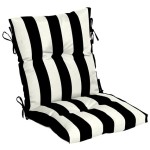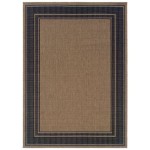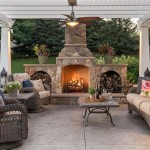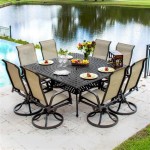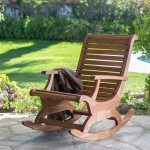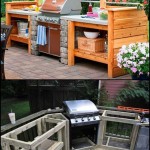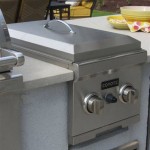Atomic Wall Clock With Indoor And Outdoor Temperature: A Comprehensive Guide
An atomic wall clock with indoor and outdoor temperature displays represents a fusion of technological precision and practical functionality. These devices offer unparalleled timekeeping accuracy, sourced directly from atomic clocks, coupled with environmental monitoring capabilities. This article explores the features, benefits, and operational principles of these sophisticated timekeeping and monitoring instruments.
Atomic clocks are the gold standard in timekeeping, utilizing the resonant frequency of atoms, typically cesium, to measure time with exceptional accuracy. These clocks are maintained by national metrology institutes such as the National Institute of Standards and Technology (NIST) in the United States and provide time signals transmitted via radio waves. Atomic wall clocks, employing radio-controlled technology, synchronize with these signals, ensuring consistent and precise time display.
The integration of indoor and outdoor temperature sensors enhances the utility of these clocks. These sensors provide real-time temperature readings, offering valuable information about the immediate environment. This feature is particularly useful for home and office environments, allowing users to monitor comfort levels and make informed decisions regarding heating, ventilation, and air conditioning (HVAC) systems.
Understanding Atomic Time Synchronization
The core functionality of an atomic wall clock lies in its ability to synchronize with atomic time signals. This synchronization process involves a radio receiver embedded within the clock, tuned to the specific frequency used by the relevant transmitting station. In North America, for example, NIST operates radio station WWVB, broadcasting on a frequency of 60 kHz from Fort Collins, Colorado. The clock's receiver continuously scans for this signal.
Once the signal is detected, the clock decodes the time information encoded within the radio wave. This information is then used to automatically adjust the clock's internal timekeeping mechanism, ensuring accuracy within fractions of a second. The synchronization process typically occurs automatically overnight, when radio interference is minimal. The clock may also include a manual synchronization option for users who wish to initiate the process on demand.
The accuracy of atomic clocks stems from the fundamental properties of atoms. Atomic clocks measure time based on the constant frequency of electron transitions within an atom, specifically Cesium-133. These transitions emit microwaves at a precise frequency, roughly 9,192,631,770 Hz. By counting these oscillations, atomic clocks can measure time with an accuracy of approximately one second per several million years.
The benefits of atomic time synchronization extend beyond mere accuracy. These clocks eliminate the need for manual time adjustments, particularly beneficial in environments where precision is critical, such as laboratories, hospitals, and broadcast studios. The automatic synchronization also accounts for daylight saving time (DST) transitions, further simplifying the user experience and minimizing the risk of errors.
Indoor and Outdoor Temperature Monitoring
The integration of indoor and outdoor temperature sensors transforms the atomic wall clock into a comprehensive environmental monitoring device. Typically, the indoor temperature sensor is integrated directly into the clock unit itself, while the outdoor sensor is a separate, wireless unit placed outside the building or within the immediate surroundings.
The outdoor sensor communicates with the main clock unit via radio frequency (RF) transmission. The range of this transmission can vary depending on the model, but typically extends to several meters, sufficient for most residential and office environments. The sensor transmits temperature readings at regular intervals, which are then displayed on the clock's screen.
The temperature sensors themselves are typically thermistors or resistance temperature detectors (RTDs). Thermistors are semiconductor devices whose resistance changes significantly with temperature. RTDs, on the other hand, are based on the principle that the electrical resistance of a metal, such as platinum, increases predictably with temperature. Both types of sensors provide accurate and reliable temperature measurements.
The displayed temperature readings can be presented in either Celsius or Fahrenheit, depending on the user's preference. Some models also display historical temperature data, such as minimum and maximum temperatures recorded over a specific period. This feature allows users to track temperature trends and make more informed decisions regarding heating and cooling strategies.
The ability to monitor both indoor and outdoor temperatures is particularly useful for optimizing energy consumption. By comparing indoor and outdoor temperatures, users can determine the most efficient settings for their HVAC systems, minimizing energy waste and reducing utility bills. In addition, the temperature data can be used to improve indoor air quality by adjusting ventilation rates in response to temperature fluctuations.
Key Features and Considerations When Choosing an Atomic Wall Clock
When selecting an atomic wall clock with indoor and outdoor temperature display, several factors should be considered to ensure optimal performance and suitability for the intended application. These factors include the clock's display characteristics, synchronization capabilities, sensor range, power source, and additional features.
The display should be clear, easy to read, and sufficiently large to be viewed from a distance. Backlighting is a desirable feature, particularly for use in low-light environments. The display should also be capable of showing the time, date, day of the week, and indoor and outdoor temperatures simultaneously.
The clock's synchronization capabilities are crucial for ensuring accuracy. Verify that the clock is compatible with the relevant time signal transmission for your geographical location. Check the clock's specifications for its synchronization range and its ability to automatically adjust for DST. The ability to manually synchronize the clock can also be useful in situations where radio interference is a problem.
The range of the outdoor temperature sensor is another important consideration. Ensure that the sensor's transmission range is sufficient to cover the distance between the sensor's intended location and the main clock unit. Consider the potential for obstructions, such as walls and trees, which can reduce the transmission range. Some models offer extended range sensors for environments with greater distances or obstructions.
The clock's power source can influence its portability and ease of use. Many models are powered by batteries, while others require a wired connection to an AC power outlet. Battery-powered clocks offer greater flexibility in terms of placement, but require periodic battery replacements. AC-powered clocks eliminate the need for battery replacements but require proximity to a power outlet.
Additional features to consider include alarm functions, calendar displays, and weather forecasting capabilities. Some models incorporate barometric pressure sensors and display weather forecasts based on changes in atmospheric pressure. These additional features can enhance the clock's overall utility and value.
Finally, the overall design and aesthetics of the clock should be taken into account. Atomic wall clocks are available in a wide range of styles, from traditional to modern, to complement different interior design schemes. Choose a clock that is both functional and visually appealing, enhancing the overall ambiance of the room or office.
In summation, atomic wall clocks with indoor and outdoor temperature capabilities present a valuable combination of precision timekeeping and environmental monitoring. These devices offer significant benefits in terms of accuracy, convenience, and energy efficiency, making them a worthwhile investment for both residential and commercial applications.

La Crosse Technology Atomic Digital Wall Clock With Indoor Outdoor Temperature Bbb86088 The Home

Lff Atomic Digital Wall Clock With Indoor Outdoor Thermometer Date Time Alarm Wireless Sensor Walmart Com

Lff Atomic Digital Wall Clock With Indoor Outdoor Thermometer Date Time Alarm Wireless Sensor Walmart Com
Atomic Clock With Indoor Outdoor Temperature Self Setting Digital Wall Ebay

Bbb86118v2 Curved Atomic Wall Clock With Indoor Outdoor Temperature An La Crosse Technology

Lff Atomic Clock 15 Wall With Indoor Outdoor Temp Humidity Large Numbers Date Time Battery Operated Walmart Com

Marathon Watch Company Cl030027 Fd Gg Graphite Grey Slim Atomic Wall Clock With Full Calendar And Large Display Indoor Outdoor Temperature

Large Digit Led Calendar Clock With Indoor Temperature 14 5 And 18 Options Clocks Acurite Weather

Manufacturer Atomic Wall Clock With Indoor Outdoor Temperature For Kitchen Bedroom And Weather Monitoring Clocks Price Made In Com

La Crosse Technology Digital Atomic Wall Clock With Indoor Outdoor Temp And Moon Phase 11 In At Tractor Supply Co

